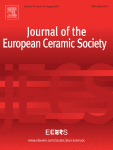Featured Scientist

Author published in "Journal of the European Ceramic Society" affiliate to
College of Science and Engineering
Department of Physics,
Fu Jen Catholic University, New Taipei City, Taiwan
Article published in
"Journal of the European Ceramic Societ" Volume 41, Issue 10, August 2021, Pages 5230-5239
Self-driven near-UV and visible light detection based on ITO/Gd-doped BiFeO3/Au heterostructure
Multiferroic BiFeO3 materials have driven great interest due to their potential in solar-spectrum energy harvesting, optoelectronic and photodetection devices. Here we report effects of electric-field poling on electronic hybridization and domain structure, and their correlations with photovoltaic responses in the ITO/(Bi0.93Gd0.07)FeO3 ceramic/Au heterostructure under 405 nm and 532 nm irradiations. Photovoltaic conversion, photoresponsivity (R) and specific detectivity (D*) are sensitive to ceramic thickness, photon energy, light intensity and electric-field poling. The photoresponsivity and detectivity in the 1 kV/cm poled photovoltaic cell under low-intensity 405 nm irradiation can respectively reach ∼4.5 × 10−2 A/W and 2.5 × 1011 Jones, which are larger than ∼2.8 × 10−2 A/W and 1.56 × 1011 Jones in the unpoled cell. This study demonstrates fast response times of ∼1 × 10−3 s and ∼2 × 10-2 s respectively under 405 nm and 532 nm irradiations. The improved photoresponse was driven jointly by the p-n junction, the field-modulated Schottky barriers and the network of grain boundaries and domain walls.[ Link to this article]

Keywords Photovoltaic conversion Polar nano-region Domain wall Photoresponsivity Specific detectivity Response time
44 views
